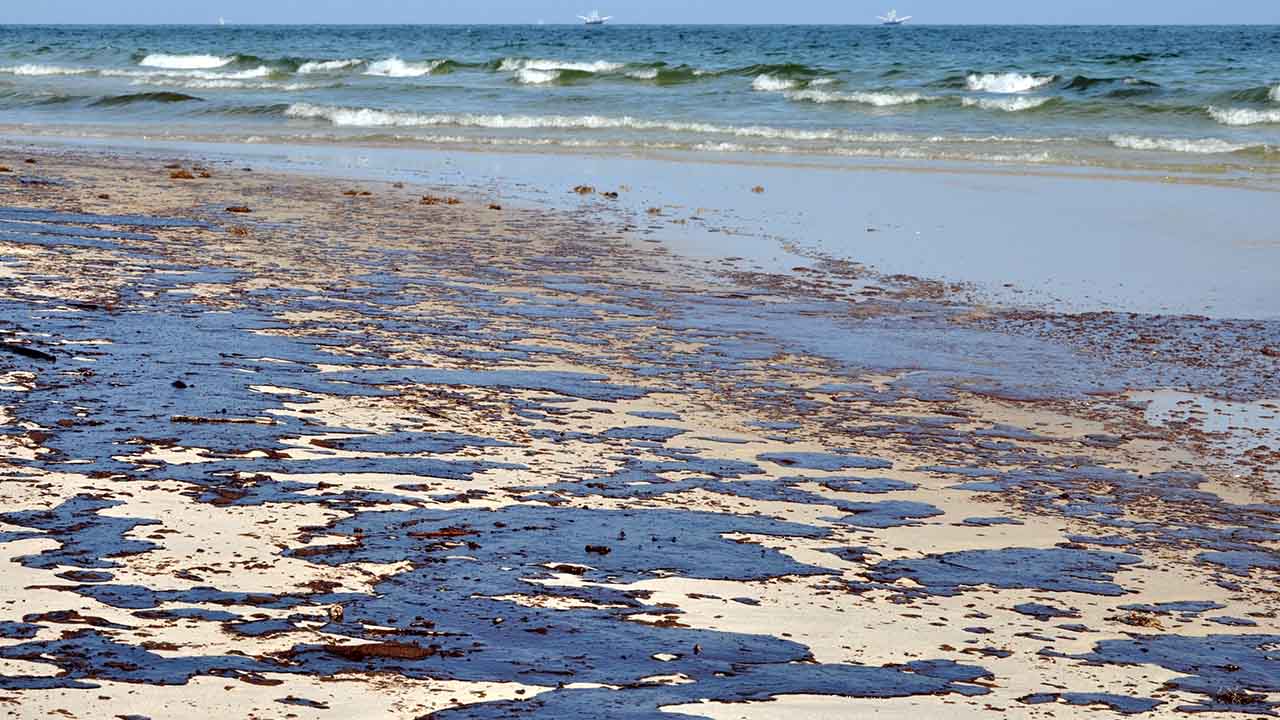Fishing for clues to how air pollution affects the heart
Research into the effects of air pollution on heart health is growing as more people call for action on climate change around the world. One Manchester researcher has used her expertise in animal physiology to show how pollutants can have the same negative impact on human health as they do on marine life.

If you were asked to think about the impact of air pollution on human health, you might think about the lungs and respiratory system first. Yet it is becoming more apparent that poor quality air can affect many other parts of the body – including the heart.
Dr Holly Shiels, an animal physiologist at Manchester specialising in marine life, is one of the increasing numbers of researchers examining the effects of air pollution on the human cardiovascular system.
She is approaching the topic by looking at the similarities between the ways in which the hearts of vertebrate animals – including humans – become weak or damaged, otherwise known as cardiotoxicity.

Dr Holly Shiels
Holly is a Reader at the Faculty of Biology, Medicine and Health with a research interest in cardiac physiology in ectotherms.
From oil spills to air pollution
"My research has focused for a long time on the cardiovascular system in fishes and how the environment affects their heart function," she explains.
As part of this work, she conducted research at the site of the 2010 Deepwater Horizon oil spill in the Gulf of Mexico to understand how the presence of oil affects the hearts of marine life such as tunas. She has also studied the effects of offshore oil rig leaks on the cod and halibut hearts in Norway (watch video).
These studies showed that the oil caused arrhythmias and cardiotoxicity in these fish. This led Dr Shiels and one of her colleagues at Bristol, Professor Jules Hancox, to wonder whether the cardiotoxic mechanisms are the same across vertebrates, and whether other forms of pollution could have similar effects on the cardiovascular systems of these organisms.
While applying for a project grant from the British Heart Foundation (BHF) to investigate this further, Dr Shiels and her team started to look at the evidence for interactions between heart disease and polycyclic aromatic hydrocarbons (PAHs), chemicals that naturally occur in fuels like oil, but that are also produced when these fuels and other substances like tobacco are burned.
They were particularly interested in the way that PAHs coat the carbon core of particulate matter (PM), which comprises all of the liquid and solid particles that are suspended in the air. PM 2.5, which is a relatively small size, is associated with poor human health, including worsened lung and heart conditions.

A beach in Alabama after the 2010 Deepwater Horizon oil spill.
So far, Dr Shiels and her team have conducted a review of the current epidemiological, clinical and experimental evidence linking pollution with cardiovascular dysfunction, published in The Journal of Physiology.
This review has shown that because of similarities in cardiac function among animals at a molecular level, fish exposed to PAHs from oil spills could offer significant insights into the human health impacts of air pollution involving PAHs and PM.
"The PM itself is coated in the same PAHs that were loose in the water in the Gulf oil spill," Dr Shiels says. "Working out why fish were dying in oil spills has really given us clues to the pathways that are cardiotoxic for humans in air pollution."
Joining the dots
An emerging strand of Dr Shiels' research, led by two BHF PhD students, focuses on the effects of long-term exposure to low levels of air pollution on mammalian hearts and human-derived induced pluripotent stem cells.
While air quality has improved over the years, the number of hospitalisations and other health issues resulting from air pollution has continued to increase. Globally, air pollution kills seven million people every year, according to the World Health Organization.
Our expanding knowledge of cardiotoxicity mechanisms means we are now better able to attribute specific ailments to air pollution, Dr Shiels explains, referencing research by Dr Mark Miller of the University of Edinburgh, an expert on the cardiovascular effects of air pollution.
"Scientists and healthcare professionals can now better join the dots between the two things, which makes air pollution seem like such a huge health issue now," she says. "It's probably always been a huge issue, but we just haven't connected it as well in the past."
The flipside of this is that we may have been measuring the wrong things since air quality began to be monitored in the 1970s. While levels of some known air pollutants have fallen over time, scientists only began recording the smallest pollutants – ultrafine particles – relatively recently.
"Our current measurements may show that some air pollution categories are improving, but as we work to reduce those further, we could be allowing other pollutants to increase," Dr Shiels explains. "People are working to try to identify how true that is, but certainly that does seem quite probable."

The Manchester Institute of Biotechnology has found a way to measure ultrafine particles.
Working together at Manchester
The good news is that researchers here at Manchester are among the first in the world to successfully measure levels of ultrafine particles. Experts at the Manchester Institute of Biotechnology (MIB) are looking at this type of measurement from a nanoplastics perspective – another important health issue for both humans and wildlife
"We have had a very successful collaboration with Holly using infrared microscopy to study fish and turtle hearts," explains Professor Peter Gardner of the MIB.
"With our new high-resolution system, we can now look at nanoparticle plastic contamination in a way that was simply not possible before."
Funding has also been announced for a Natural Environment Research Council air quality supersite to be established at Manchester, enabling researchers to make more detailed continuous measurements of air quality than is currently possible.
Manchester's expertise in areas like this makes it an attractive place to conduct research into the health impacts of pollution and climate change, Dr Shiels says. The city is home to research hubs like the Manchester Environmental Research Institute, the Sustainable Consumption Institute and the Manchester site of the Tyndall Centre for Climate Change Research.
"You can really get a sense of how Manchester can make a big difference through our collective expertise across social sciences, biomedicine, environment, atmosphere and imaging technology," Dr Shiels says. "It is one of the great advantages of working at The University of Manchester."
Find out more about cardiovascular research at Manchester.
